

|
Information and discussion regarding garden diseases, insects and other unwelcome critters.
|
 |
|
|
Thread Tools | Display Modes |
|
|
#1 |
|
Tomatovillian™
Join Date: Sep 2012
Location: Lake Okeechobee, Florida (zone 10-b)
Posts: 161
|
Some of you know that I am fairly new to gardening. I have been having fun working it and learning about the different aspects of it. I scout my garden every day looking for any thing different. As I see a bug, I take a pic of it, research to identify it, and how it contributes to the health or detriment of my garden. Here are a few that I have come up with.
The invasive exotic Diaprepes Root Weevil, Diaprepes abbreviatus. Though it is beautiful, this Caribbean native has naturalized in Florida “where it has become a serious pest especially of citrus and woody ornamentals” ‘The weevil was accidentally introduced into Florida in the 1960s and caused extensive damage. It has been intercepted in shipments of plants to California.’ Said to feed on some 270 different plants, it’s described as ‘a significant threat to both urban and agricultural trees and plants. 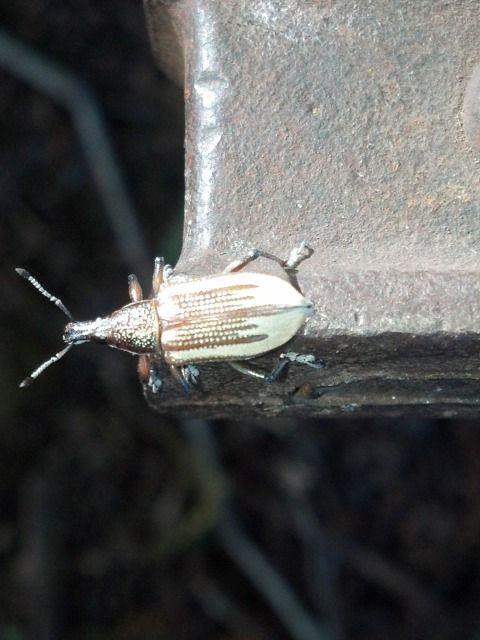 The banded cucumber beetle is basically a tropical insect, and until the early 1900s its distribution in the United States was limited to southern Arizona and Texas (Saba 1970), and south through Mexico and Central America (Krysan 1986). It has since expanded its range throughout the southern United States from North Carolina to southern California, though its intolerance to freezing temperatures probably limits its northward distribution to its current status. Within Florida it is most abundant in the organic soils near Lake Okeechobee, though it occurs throughout the state, where it is known as a vegetable pest. The banded cucumber beetle is nearly omnivorous, and in addition to numerous plants being attacked, all parts of the plant are injured. Damage may occur to foliage, blossoms, silk, kernels, the plant crown, and roots. Larvae feed only on the roots. The most frequent forms of serious injury are defoliation by adults and root feeding on plant seedlings by larvae. Some of the most serious injury results from larval feeding on sweet potato roots. Banded cucumber beetle is known as a vector of virus diseases in beans, and larval feeding might increase the incidence and severity of Fusarium wilt. 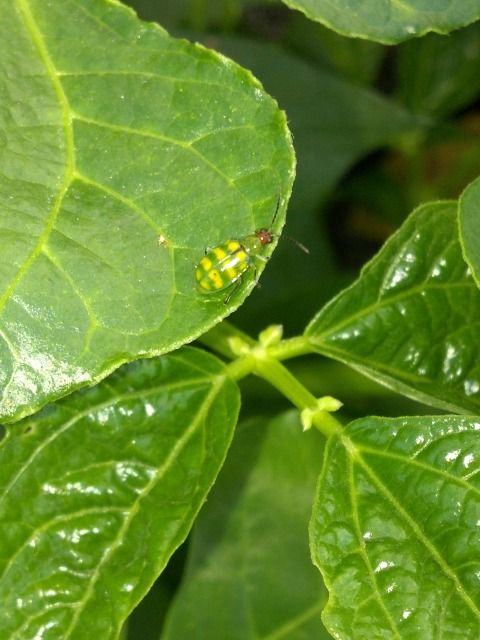 The assassin bug is a predatory bug that will use its sucking-piercing mouth parts to feed on other insects. Not to let you down, these bugs get their name from their hunting style. You see they tend to remain concealed and still until they ambush any unfortunate prey going for a nice stroll. In one quick and accurate strike they will inject a deadly poison into their prey. This is the gross part folks! This poison will cause the tissues to break down so the assassin bug can simply suck up their food like a McDonald’s milkshake. If they are handled roughly they will pierce your skin in self-defense. This will feel a lot like a bee sting and will be followed by numbness and swelling. 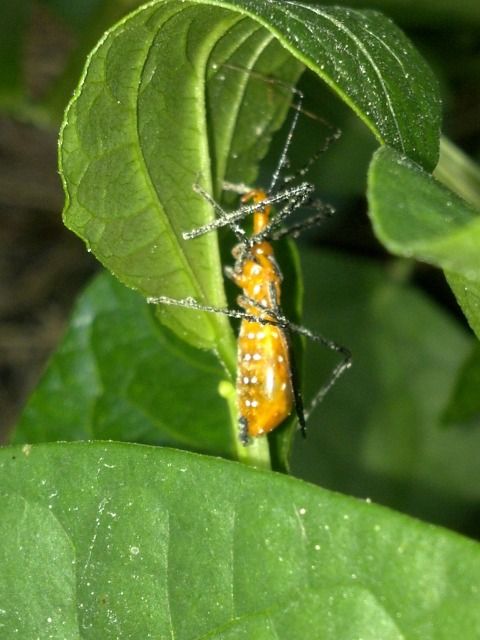 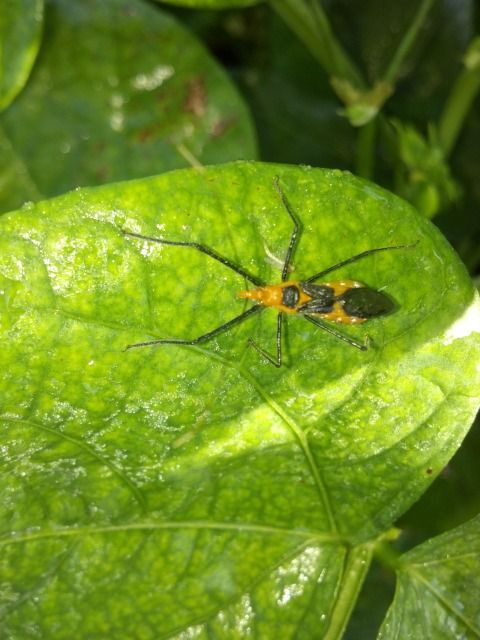 And another type of assassin bug also called a wheel bug. 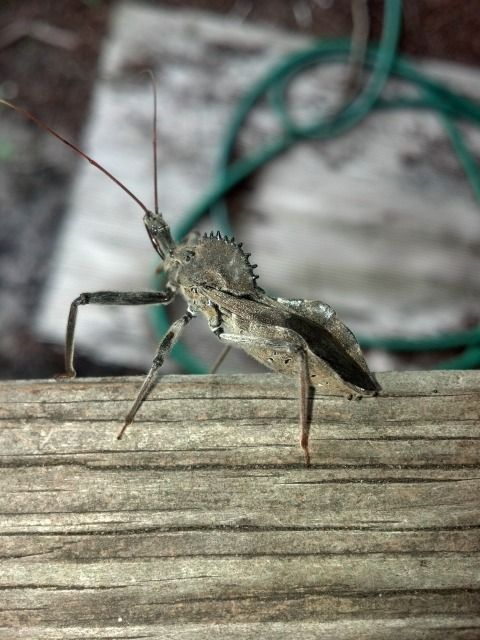
__________________
Life is very short and there is no time for fussing and fighting my friends. The Beatles |
|
|

|
|
|
#2 |
|
Tomatovillian™
Join Date: Dec 2011
Location: Central Florida
Posts: 377
|
Excellent photos Mike! Thanks for this very informative post

__________________
Jerry - You only get old if you're lucky. |
|
|

|
|
|
#3 |
|
Tomatovillian™
Join Date: Feb 2012
Location: Northeastern KS, Zone 6a
Posts: 130
|
That last one kind of looks like my ex.

|
|
|

|
|
|
#4 |
|
Tomatovillian™
Join Date: Sep 2012
Location: Lake Okeechobee, Florida (zone 10-b)
Posts: 161
|
One of the more colorful spiders in Florida is the spinybacked orbweaver
The spiders prey on whiteflies, flies, moths, and beetles that are caught in the webs. 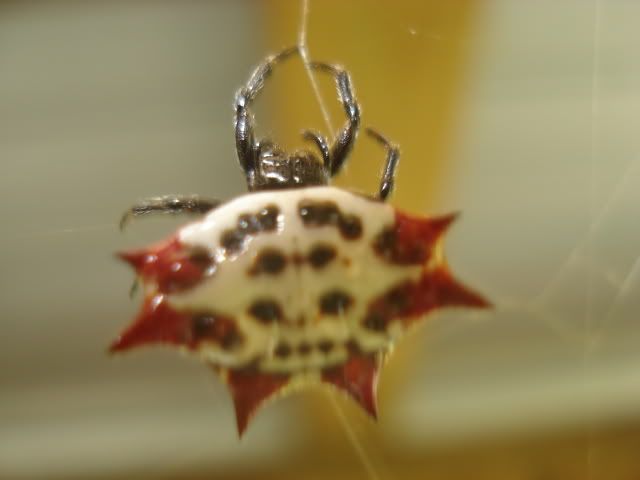
__________________
Life is very short and there is no time for fussing and fighting my friends. The Beatles |
|
|

|
|
|
#5 |
|
Tomatovillian™
Join Date: Feb 2012
Location: Northeastern KS, Zone 6a
Posts: 130
|
Those little guys have an uncanny knack for spinning webs right at face-level. Weaving through my indeterminates before 8am can be tricky...I'm pretty sure my new neighbor thinks I'm a limbo-enthusiast.
Beautiful pictures, by the way! |
|
|

|
|
|
#6 |
|
Tomatovillian™
Join Date: Sep 2012
Location: Lake Okeechobee, Florida (zone 10-b)
Posts: 161
|
Thanks guys! Unbelievable how far digital cameras in phones have come. The pictures in the first post were all taken with my Motorola Droid Razr smartphone.
__________________
Life is very short and there is no time for fussing and fighting my friends. The Beatles |
|
|

|
|
|
#7 |
|
Tomatovillian™
Join Date: Aug 2011
Location: Plantation, Florida zone 10
Posts: 9,283
|
Great thread Mike, and useful,
Thanks MUCHO!! ( we are in South Florida after all  ) )I should take photos of my yard and all the whiteflies of different types! -Marsha |
|
|

|
|
|
#8 | |
|
Tomatovillian™
Join Date: Sep 2012
Location: Lake Okeechobee, Florida (zone 10-b)
Posts: 161
|
Quote:
I would love that Marsha! Not sure if I would know a whitefly if I saw one yet. There are alot of small fly looking bugs flying around that I can't get them to stay still long enough to take a pic. Wish every one would in Florida would take pics of their pests and post them in this thread. It would make it easier for us newbies. I haven't got a good photo of the aphids yet that are starting to show up now.
__________________
Life is very short and there is no time for fussing and fighting my friends. The Beatles |
|
|
|

|
|
|
#9 | |
|
Tomatovillian™
Join Date: Aug 2011
Location: Plantation, Florida zone 10
Posts: 9,283
|
Quote:
They are horrible! I'll try to get photos next week to post. They are ubiquitous in florida, and many other states. NEEM NEEM NEEM!!! -Marsha |
|
|
|

|
|
|
#10 |
|
Tomatovillian™
Join Date: Sep 2012
Location: Lake Okeechobee, Florida (zone 10-b)
Posts: 161
|
Yep Marsha! I neemed last night right before dark.
__________________
Life is very short and there is no time for fussing and fighting my friends. The Beatles |
|
|

|
|
|
#11 |
|
Tomatovillian™
Join Date: May 2012
Location: Brooksville, FL
Posts: 1,001
|
Great photos and very helpful for this new to gardening in FL gal.
Thanks for sharing and the info on them. I'm thankful (shhhhhhhh I've not seen any of them yet.)
__________________
Jan “Do what you can, with what you have, where you are.” -Theodore Roosevelt |
|
|

|
|
|
#12 |
|
Tomatovillian™
Join Date: Sep 2012
Location: Lake Okeechobee, Florida (zone 10-b)
Posts: 161
|
Apparently not all stink bugs are bad. This is from the IFAS website from the University of Florida. Wish I had not squashed it.
Spined Soldier Bug This insect is a generalist predator with a broad host range, reportedly attacking 90 insect species, which includes several important economic pests. Reported prey include the larvae of Mexican bean beetle, European corn borer, diamondback moth, corn earworm, beet armyworm, fall armyworm, cabbage looper, imported cabbageworm, Colorado potato beetle, velvetbean caterpillar, and flea beetles. When prey are scarce, the spined soldier bug may feed on plant juices, but this feeding is not reported to cause plant damage. Podisus maculiventris is associated with several crops including alfalfa, apples, asparagus, beans, celery, cotton, crucifers, cucurbits, eggplant, potatoes, onions, soybeans, sweet corn and tomatoes. The effectiveness of this species in preying on economic pests resulted in its use in classical biological control programs in other countries, including Eastern Europe and Russia. However, this has not been successful in colder climates, perhaps due to an inability of overwinter. Podisus maculiventris eggs are also sold commercially for use in control programs and this has proven successful in controlling pests in European and North American heated greenhouses. Use in large area field crops is often not economically viable due to the production costs of raising the bug. In addition, naturally occurring populations often are not numerous enough to overpower large populations of pests in the spring. Pheromones have been used to draw naturally occurring and newly emerging populations of this stink bug to target crops in the spring. 
__________________
Life is very short and there is no time for fussing and fighting my friends. The Beatles |
|
|

|
|
|
#13 |
|
Tomatovillian™
Join Date: Sep 2012
Location: Oklahoma
Posts: 4,488
|
If you get the bad ones you'll know.
__________________
Scott AKA The Redbaron "Permaculture is a philosophy of working with, rather than against nature; of protracted & thoughtful observation rather than protracted & thoughtless labour; & of looking at plants & animals in all their functions, rather than treating any area as a single-product system." Bill Mollison co-founder of permaculture |
|
|

|
|
|
#14 |
|
Tomatovillian™
Join Date: Sep 2012
Location: Lake Okeechobee, Florida (zone 10-b)
Posts: 161
|
I have seen the green ones also, but I haven't been able to take a pic of one. Apparently these soldier bugs feed on them also.
__________________
Life is very short and there is no time for fussing and fighting my friends. The Beatles |
|
|

|
|
|
#15 |
|
Tomatovillian™
Join Date: Sep 2012
Location: Lake Okeechobee, Florida (zone 10-b)
Posts: 161
|
Not sure I have correctly identified this one. Most closely resembles what I have and plenty of them. Swarms in fact.
If I am wrong some one please correct me. Thanks Green Long-legged fly Dolichopodids are small (4-9 mm), slender flies, which are usually brilliantly colored with metallic hues of green, blue, copper, gold, and silver. Some species are gray or black. They are characterized by 2 long wings and long slender legs. Dolichopodids occur in diverse habitats; larvae are commonly found in moist soil and under tree bark and adults are often abundant near streams, and are found on foliage, tree bark, and flowers of various plants. Both larvae and adults are predaceous on many other insects and small arthropods, including mites, thrips, psocids, aphids, and other insects larvae. The maggot like larvae of the long-legged fly are found in such habitats as soil, rotted vegetation, mud, and under bark. Most are predators or scavengers. As these are beneficial insects. 
__________________
Life is very short and there is no time for fussing and fighting my friends. The Beatles |
|
|

|
 |
|
|
